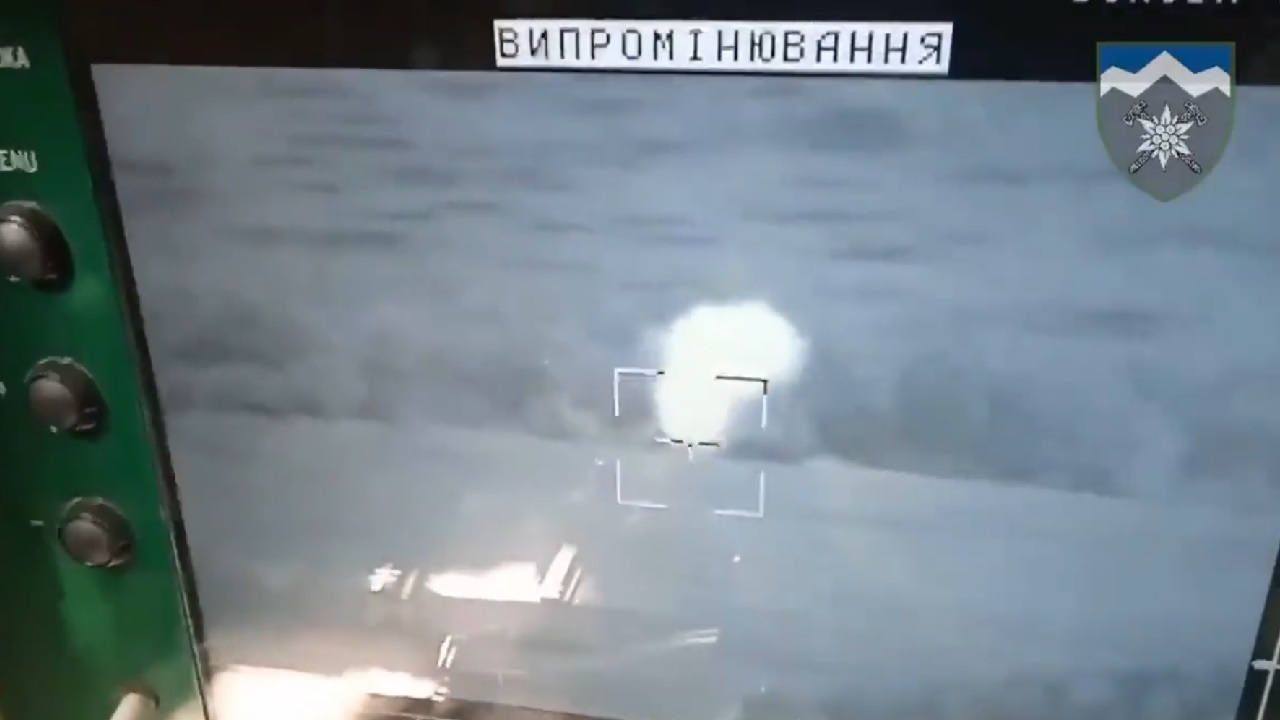Stugna-P strikes again: Ukraine’s 10th Mountain Assault Brigade shared video footage on Facebook on Friday showing five Russian vehicles being struck by Stugna-P anti-tank guided missiles.
The video footage appears to have been recorded on a cell phone and shows troops using ground-station video equipment to watch the strikes occur in real-time. Behind the sun glare on the screens, viewers will see Russian vehicles in the sights of the operator’s screens, with each vehicle exploding into a plume of dust and smoke within seconds.
No locations were given, nor do we know when each clip was filmed. That means the videos could be from the beginning of the war or could be more recent. What they do show, however, is that the Ukrainian military is pleased with the performance of Stugna-P guided missiles and their ability to destroy Russian armored vehicles and tanks.
Ukrainian Brigade Destroys 11 Russian Vehicles
This week, Ukraine’s 93rd Mechanized Brigade also claimed to have destroyed 11 Russian armored vehicles and tanks in eastern Ukraine.
Video footage shared by the brigade’s social media accounts shows multiple vehicles being hit by Ukrainian missiles in Kharkiv. The video was also shared by the Center for Strategic Communications and Information Security, a wing of the Ukrainian government.
“The 93rd Cold Yar Brigade destroyed 11 units of enemy equipment, including tanks, infantry fighting vehicles, and Lynx combat vehicles,” a statement from the 93rd brigade reads.
“The Kholodnoyars are firmly defending the Izium area and reaffirm that the Russian army is not as powerful as their propaganda suggests. The Ukrainian army has a strong motivation because it protects its own land!”
Stugna-P Keeps Winning: Is Russia Using Old, Soviet-Era Tanks?
One of the reasons why these Stugna-P missiles have proven so effective in Ukraine is that the Russians appear to be using a fairly large number of older, Soviet-era tanks and armored vehicles.
Stugna-P ATGM strikes by Ukraine’s 10th Mountain Assault Brigade on five Russian vehicles. Not sure if all of the footage is new.https://t.co/meDCgG09n3 pic.twitter.com/82xJrvkaSI
— Rob Lee (@RALee85) June 24, 2022
By pulling these older vehicles out of storage, Russia is increasing its fleet of vehicles available for soldiers to use. At the same time, though, Russia is also putting soldiers at risk by deploying vehicles that are particularly vulnerable to more modern ammunition.
After losing over 700 of its T-72, T-80, and T-90 tanks in just three months of fighting in Ukraine, Russia is now using older T-62 tanks. These 60-year-old armored vehicles are significantly less capable of withstanding strikes from modern ammunition, designed to break through modern protective armor.
The British Ministry of Defence said that the deployment of such old vehicles indicates that Russia has a “shortage of modern, combat-ready equipment.”
700 modern tanks lost in Ukraine – and that’s a number that is constantly rising – represents as much as one-third of the pre-war Russian inventory of battle-ready armored vehicles.
What’s more, Russia cannot immediately deploy most of its older equipment – with many vehicles requiring months of work to prepare them for deployment on the battlefield.
Jack Buckby is a British author, counter-extremism researcher, and journalist based in New York. Reporting on the U.K., Europe, and the U.S., he works to analyze and understand left-wing and right-wing radicalization, and reports on Western governments’ approaches to the pressing issues of today. His books and research papers explore these themes and propose pragmatic solutions to our increasingly polarized society.

